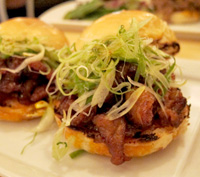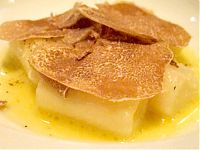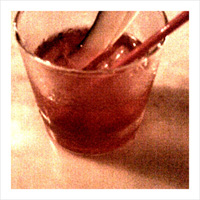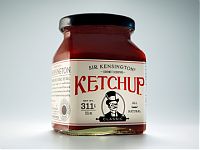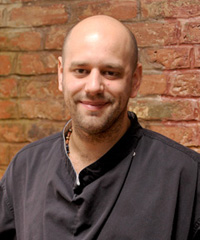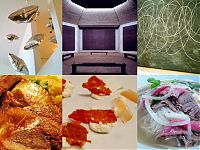Sparkles Everywhere
by Cynthia Sin-Yi Cheng
September 30, 2006
Since my last wine entry this summer I went from taking an adorable eight-year-old French-Chinese boy to Valentino’s debut runway show in Beijing to sleeping through Istanbul’s daily, citywide four a.m. wake-up call reminding those fasting for Ramadan to take their first meal of the day. While I was zipping through these and other cities, being me, I naturally kept a keen eye out for champagne offerings. Serendipitously, everywhere I went I met people connected to the tiny world of champagne.
If you’ve been a regular follower of Sipping, you must have already noticed that I am a one-track-minded gal. Yup. So this month I return to my wine passion and focus: champagne. Unfortunately, this is a wine most people find inaccessible, and I really believe it is because they know too little about it and end up feeling either intimidated or turned off. True, there is a price element here, but a good bottle of champagne can be had starting around $35 (not $135), which doesn’t need to break the bank and thus be reserved for that once-a-year splurge.
Here is a bit of current news on champagne happenings which I hope will entice you into ordering a glass of bubbly the next time you go out, or maybe popping a bottle just because.
Always on the lookout for good writings on champagne, I recently stumbled upon a great article predicting the next champagne trend and a wonderful series of chapters dedicated to champagne in a new wine book.
Up Next: Brut Zero
Let’s start with the October 5th article entitled “’Brut Zero’: A New Trend in Champagne Bubbles to the Surface” by Marlowe Hood of Agence France-Presse. I was thrilled by the piece, but struggled a bit with the word “trend” in the title. I feel that it trivializes what it is trying to promote. A trend is fleeting and banks on novelty rather than long-lasting quality. This is the opposite of everything I feel about the style of champagne referred to as brut zero (also often seen as ultra brut, sans-dosage, brut nature and zéro dosage). It is a very pure style of wine; it might take you some time to fall under its spell, but once you do, you’ll be unable to give it up.
What does “brut zero” mean, anyway? Well, the majority of the champagnes we consume have a small percentage of sugar added in the last step of the champagne-making process before the wine is cork sealed. The most widely sold champagne style is the brut, which contains ten to fifteen grams of added sugar. The addition of dosage (sugar) works to balance out the final product. Brut zero just means there is “no” sugar added (or, to be precise, up to five grams of sugar is allowed). We are talking bone dry. It is actually a rather difficult champagne style to pull off well, since the base wine has to be of top quality as it has nothing to hide behind. Think completely naked!
This is especially tricky for champagne since the acidity level can be quite high if the grapes are not mature enough or lack sufficient ageing. You might have noticed this if you’ve had a glass of fizz sitting there just a little too long and when you took a sip of the room-temperature, no-longer-fizzy wine you were a bit thrown off by the piercing acidity. Otherwise, we’d see a lot more still wines coming out of Champagne.
My first taste of a brut zero was in the Côte des Blancs Premier Cru village of Cuis, where I went to see one of my favorite producers: Pierre Gimonnet. In his tiny reception room, Didier (the current generation owner), my bubbly hero, guided me through a tasting of his entire line-up. Logically, we started with the driest wine, the “Cuvée Oenophile,” a zéro dosage. I remember vividly it was hard to appreciate and accept at first because I was not used to champagnes that are so brutally pure and dry. Yet at the same time I realized that my sense of taste was being challenged and that this was a real champagne connoisseur’s wine. I knew it was simply a matter of time and exposure before I would be embracing and craving it.
That was three years ago, and since then I have become a convert. In fact, I often start my champagne tastings with a brut zero to give everyone a chance to get acquainted with this style that is still slowly — but according to the article there is hope —making it into the market.
The sans dosage article provided tons of statistics and examples to support the author’s claim to a growing trend. The most tangible evidence is that the export quantity of this wine style has “shot up in a decade from a couple thousand bottles to 15,000 last year.” Another convincing example highlights winemakers like Benoit Tarlant, from Oeuilly, who is validating the brut zero style by allocating more than fifty percent of his total annual production of 110,000 bottles into this bone-dry style. Still, the article also admits that brut zero is not that easy to track down even in fine wine stores. I’m dying to see it showing up in good retailers and restaurant wine lists, but even in a wine-diverse metropolis like New York City it is currently still a rarity. According to the fabled importer of grower champagnes, Terry Theise, the “Cuvée Oenophile” from Gimonnet represents “just 2% of the total sales of his entire Gimonnet selection.”
Hood’s thinking about why brut zero will continue to gain popularity is very logical. Most serious wine drinkers gradually seek out wines of more purity and subtlety. In the category of champagne, brut zero would be the ultimate wine to fit that bill. The article ends with a great little anecdote: Ayala Champagne house accidentally produced a brut zero last year that turned out to be a big hit.
As much as I am an advocate of the brut zero style, I still think it will be expanding within a niche market for the time being since it won’t be to everyone’s taste. However, it will cause some ripple effects, and one that I look forward to is a drop in the sugar level in all champagnes, and that is a change I hope to see becoming a lasting trend.
Here are two of my favorites brut zeros:
Laurent-Perrier’s Ultra Brut and Drappier’s Brut Nature
A Hedonist’s Guide to the World of Bubblies
In the celebrated novelist and longtime oenophile Jay McInerney’s new wine book, aptly entitled A Hedonist in the Cellar (Alfred K.Knopf; $24;), the author recounts his personal anecdotes of the world of vino. When I received the galley for review, I hurriedly turned the pages to see what had been covered on champagne. I was tickled to see McInerney’s choice of three champagne subjects that are personally dear to me, as well as great introductions to the elusive world of Champagne.
My favorite of these chapters, “The Maserati of Champagne,” features one of the most coveted champagne houses in the world: Salon. The author builds the first few paragraphs up to why this house “might plausibly claim to be the first cult wine of the twentieth century,” then transports us to a lunch interview he is having with Didier Depond, the present director of Salon. I was especially amused, since I just last November had the luxury of lunching with the very unassuming Didier in Champagne. McInerney points out that the young director of this cult house has “a pretentiousness deficit,” and I can surely attest to that. Funny how we are all conditioned to imagine that a prestigious champagne house must be run by an imposing man of a certain age and attitude.
So why all the fuss about Salon? There are several key factors: 1/It is produced only in the best years in limited quantity; 2/It goes through a longer ageing period than most champagnes; 3/It is a single cru (Le Mesnil-sur=Oger), single grape variety (Chardonnay), single vintage wine; 4/It comes from twenty parcels in the most prestigious blanc de blancs Grand Cru village of Le Mesnil-sur-Oger; 5/It has amazing ageing potential; 6/It only produces one champagne (most houses will have several champagnes in its portfolio).
I loved McInerney’s anecdote of how he was expecting the “toro” course Didier ordered to be tuna belly, when in fact it was bull. This was the perfect point to show that a top blanc de blancs (one-hundred-percent Chardonnay) champagne like Salon has the complexity and structure to stand up to meat, the opposite being a common misconception.
The book is also full of insiders’ tips regarding champagne purchases. The author offers — as a Christmas present to the reader — a more affordable version of Salon, Delamotte, which is the adjoining sister champagne house and which produces wines with grapes that don’t make the cut for a Salon vintage. Naturally, Delamotte is available at a fraction of the price of Salon.
The two other chapters dedicated to champagne are on blanc de blancs (my champagne style of choice) and grower producers. Now that I’ve given you a preview of my favorite chapter, I will leave you to discover the other stories on your own. Happy reading!
Survey
All champagne enthusiasts: Feel free to ask me Qs or email me about your favorite producer or pairing. Or send me your email address to be notified of future champagne class/event.



